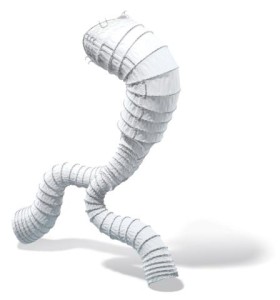
Lombard Medical has announced positive clinical results from The Prospective Aneurysm Trial: High Angle Aorfix Bifurcated Stent Graft (PYTHAGORAS trial) at the 2016 Society for Vascular Surgery Annual Meeting in National Harbor, USA.
The PYTHAGORAS trial is a prospective, controlled, multicentre US trial designed to evaluate the safety and effectiveness of the Aorfix endograft for the treatment of highly angulated aortic necks or tortuous aortoiliac anatomy.
Key highlights from the PYTHAGORAS trial clinical results include:
218 patients were enrolled in the US trial, 151 of which had high neck angles; 87% of surviving patients were followed up at five years.
The core lab reported no type 1 or type 3 endoleaks in any annual computed tomography imaging follow-up after the first year.
60% of angled neck patients had significant aneurysm sac shrinkage at five years. Low angle patients had similar outcomes, illustrating the tolerance of Aorfix to extreme angulation.
All-cause mortality, aneurysm-related mortality, secondary intervention and aneurysm rupture rates over five years were compared with the Lifeline Registry of US EVAR trials in normal anatomy, and were found to be equivalent. There were no significant differences between Aorfix results in standard and highly angulated necks.
Mahmoud B Malas, associate professor of Surgery, director of Endovascular Surgery, Johns Hopkins Bayview Medical Center, Baltimore, says, “The US PYTHAGORAS trial is the first EVAR clinical trial to include a majority of highly-angulated (greater than 60 degree) infra-renal aortic necks as well as a higher percentage of female patients (29%). Moreover, the suitability of patients to be included was determined by the investigators rather than the company, resulting in many more ‘real-world’ cases being recruited. Angulation alone has been associated with worse outcomes in EVAR and unfortunately, female EVAR patients usually have complication rates that far exceed those of males. These factors, and the addition of ‘real-world’ anatomy, made the study group of patients highly challenging from many perspectives. Pertinent outcomes were better than or similar to trials that did not have these risk factors. The results attest to the long-term durability of the Aorfix design and support the use of this endovascular option, which is ‘on-label’ even in patients with hostile anatomy, including highly-angulated aortic necks.”












